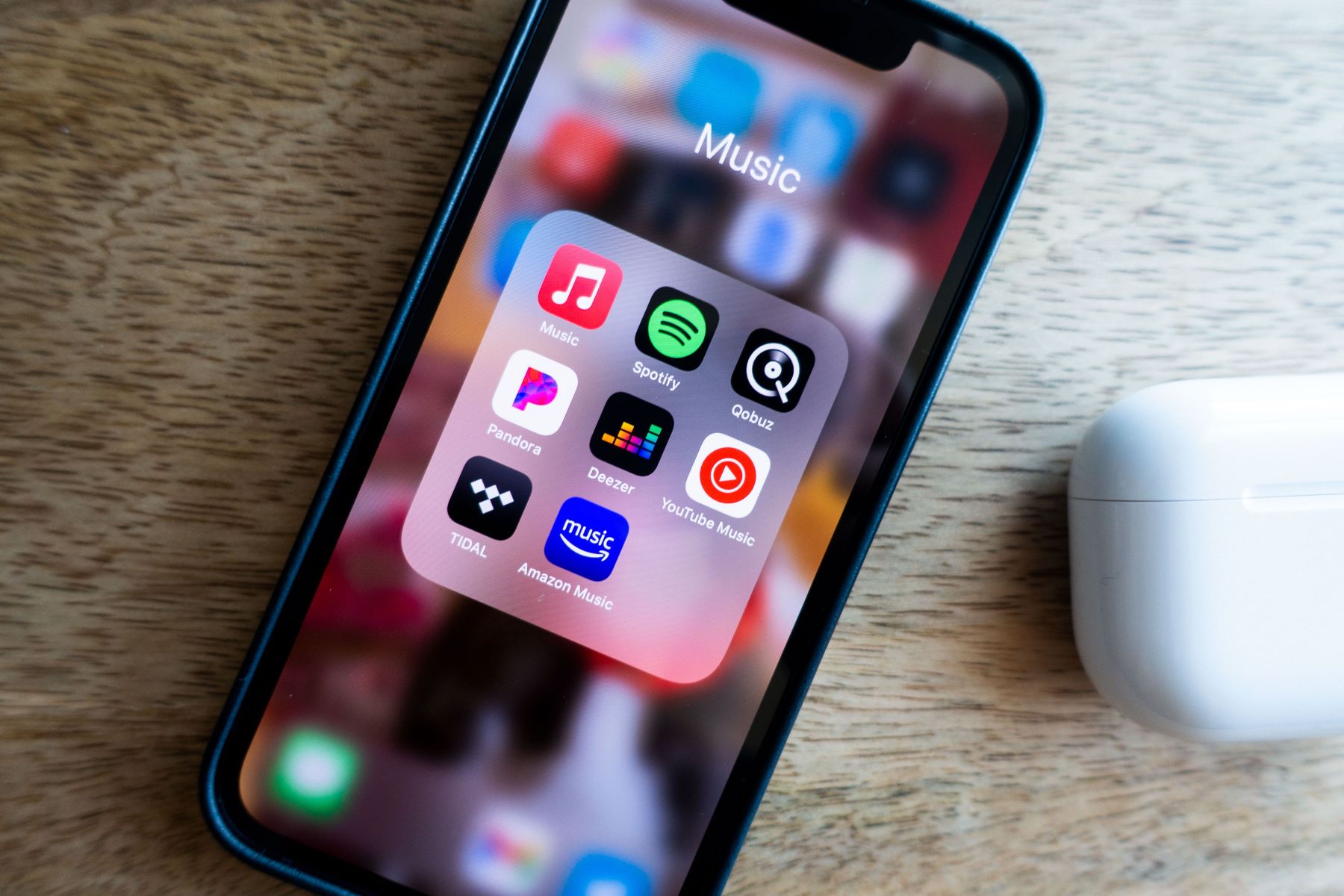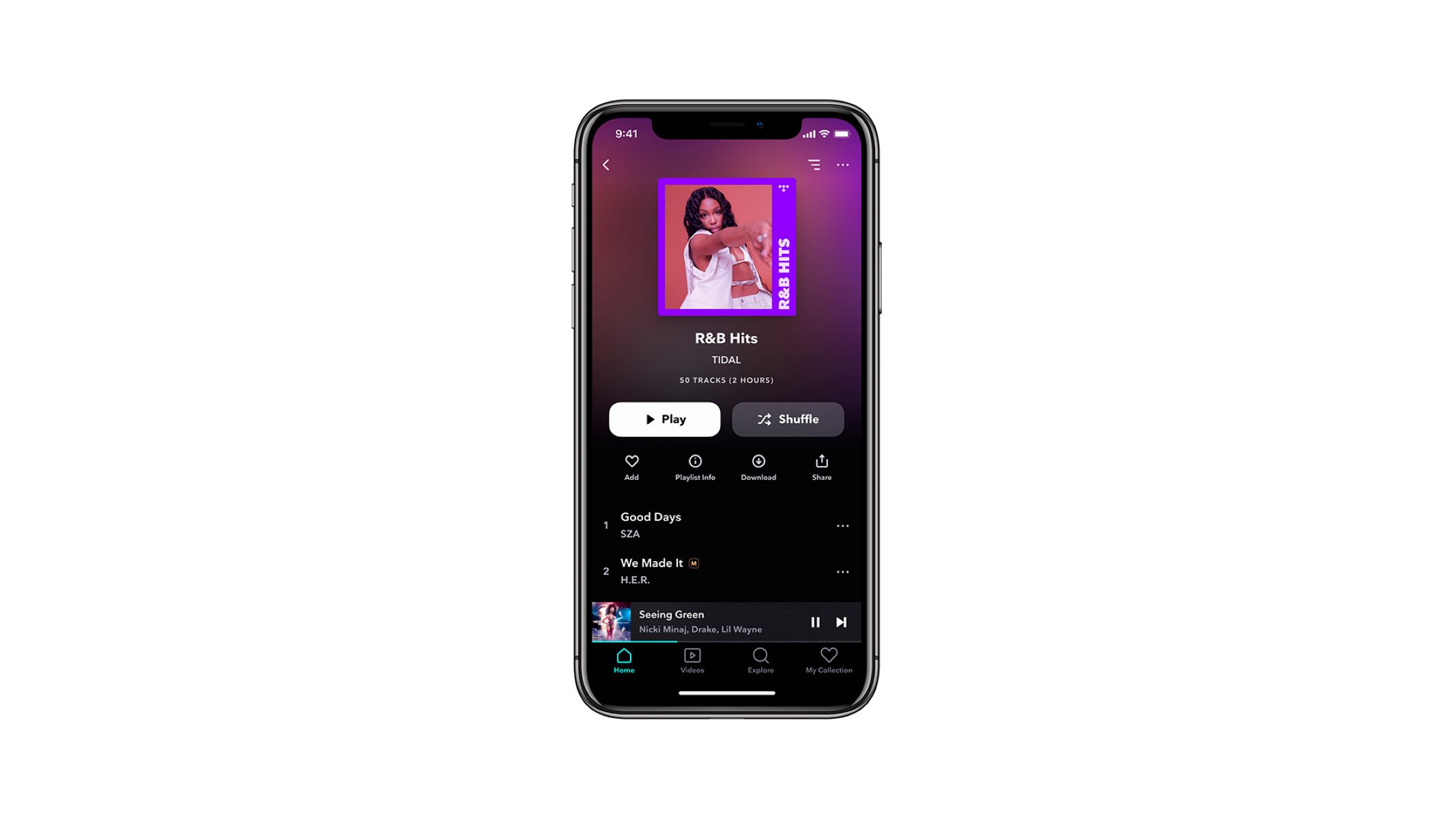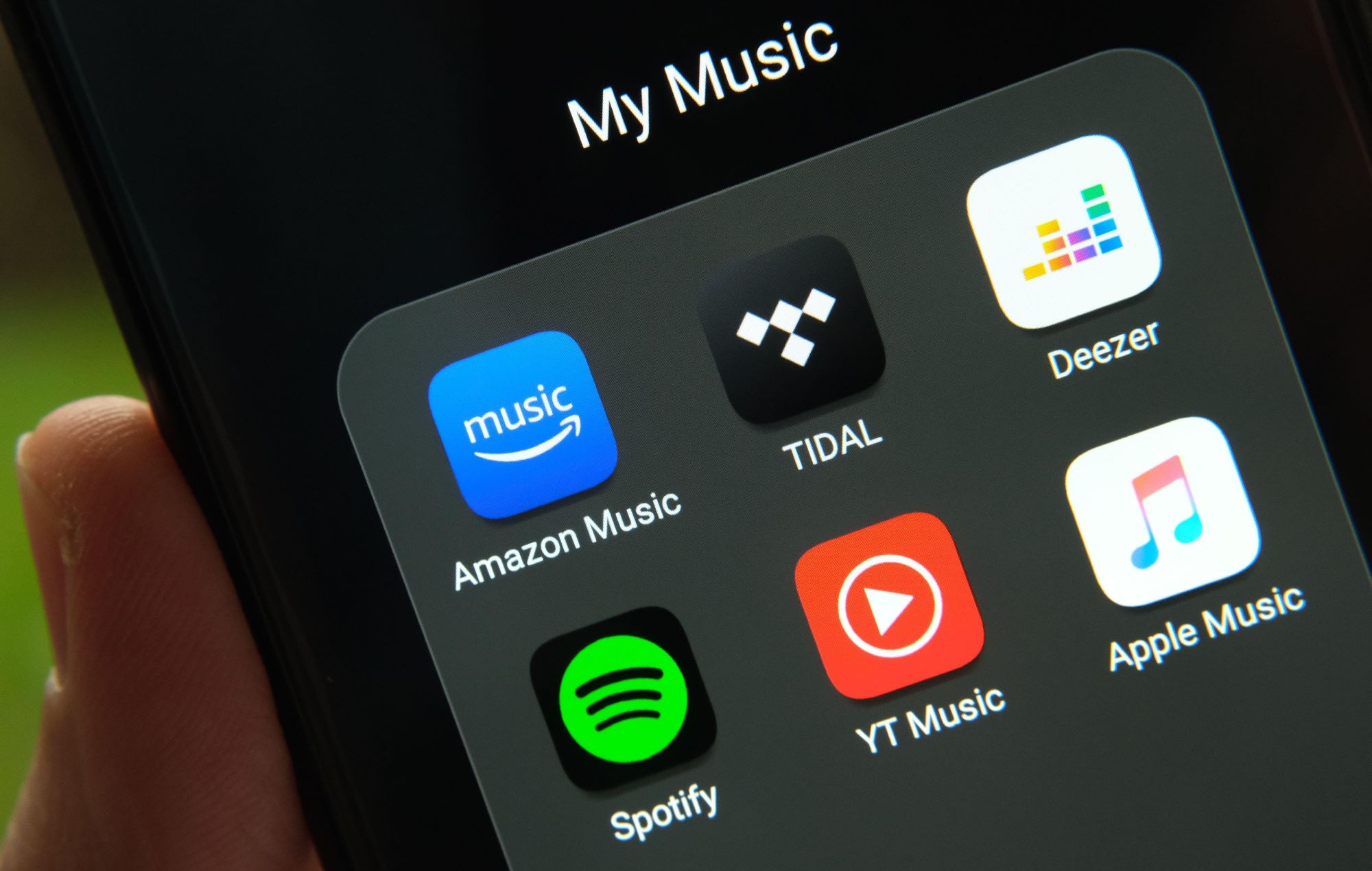Home>Production & Technology>Streaming Service>How To Obtain Music For Music Streaming Service


Streaming Service
How To Obtain Music For Music Streaming Service
Published: February 2, 2024
Looking for ways to obtain music for your streaming service? Find out how to access a wide variety of music for your platform and enhance the user experience.
(Many of the links in this article redirect to a specific reviewed product. Your purchase of these products through affiliate links helps to generate commission for AudioLover.com, at no extra cost. Learn more)
Table of Contents
- Introduction
- Understanding Music Licensing
- Exploring Music Licensing Options
- Identifying Royalty-Free Music Sources
- Licensing Music from Independent Artists
- Licensing Music from Record Labels and Distributors
- Exploring Music Libraries and Catalogs
- Utilizing Creative Commons Licensed Music
- Working with Music Licensing Agencies
- Tips for Discovering New Music
- Conclusion
Introduction
Welcome to the world of music streaming services, where millions of songs are just a click away. With the advent of technology, music consumption has evolved, and streaming platforms have become the go-to destination for music enthusiasts to explore, discover, and enjoy their favorite tunes.
As a music streaming service, it is crucial to have a vast library of music content that appeals to a wide range of tastes and preferences. However, building such a library requires much more than just curating popular tracks. It involves understanding the intricate world of music licensing.
Music licensing is essential to ensure that the music you provide on your streaming service is legally obtained and properly compensated. It involves obtaining the necessary rights and permissions from artists, songwriters, and copyright owners to stream their music to your users.
In this article, we will delve into the world of music licensing for streaming services, exploring the various options available to obtain music for your platform. We will discuss how to identify royalty-free music sources, license music from independent artists, work with record labels and distributors, utilize music libraries and catalogs, and make use of Creative Commons licensed music. Additionally, we will explore the role of music licensing agencies and provide tips for discovering new music to enhance your streaming service’s offerings.
By understanding the intricacies of music licensing, you can ensure that your streaming service not only provides an extensive music library but also operates within legal boundaries, while supporting and compensating the talented artists who create the music.
Understanding Music Licensing
Music licensing is the process of obtaining the legal rights and permissions to use music in various ways, such as streaming, broadcasting, or public performance. It involves obtaining licenses from the appropriate parties, including artists, songwriters, publishers, record labels, and distributors, to ensure the proper use and fair compensation for their creative works.
There are several types of music licenses that streaming services need to obtain:
- Performance rights licenses: These licenses grant the right to publicly perform music, including streaming it to your users. Performance rights organizations (PROs) such as ASCAP, BMI, and SESAC manage the collection and distribution of performance royalties to songwriters, composers, and publishers.
- Mechanical licenses: These licenses are necessary for reproducing and distributing the musical composition, typically obtained from the publisher or the appropriate mechanical rights agency, such as the Harry Fox Agency (HFA).
- Sync licenses: Sync licenses are needed when you want to synchronize music with visual content, such as in TV shows, movies, or advertisements. These licenses are typically obtained directly from the copyright owner or through a sync licensing agency.
- Master licenses: Master licenses grant the right to use a specific recording of a song, typically obtained directly from the record label or through a distributor. These licenses are necessary when streaming specific versions or recordings of songs on your platform.
It’s important to understand that music licensing can be a complex process, as there are multiple stakeholders involved, and the rights to a song can be divided among different parties. For example, the songwriter may own the rights to the composition, while the record label owns the rights to the recording. Therefore, it’s crucial to identify and obtain licenses from all relevant parties to ensure legal compliance.
Non-compliance with music licensing requirements can lead to copyright infringement claims and legal consequences. Therefore, it’s crucial for streaming services to have a comprehensive understanding of music licensing and to work with industry professionals, legal experts, or specialized music licensing agencies to navigate the complexities and ensure compliance.
Exploring Music Licensing Options
When it comes to obtaining music for your streaming service, there are several options to explore. The choice of licensing options will depend on factors such as your budget, target audience, and the level of control you want over the music catalog. Here are some common music licensing options to consider:
- Direct Licensing: Direct licensing involves negotiating and obtaining licenses directly from artists, songwriters, or copyright owners. This option allows for more personalized agreements and potentially discovering unique and undiscovered talent. However, it can be time-consuming and require individual negotiations with each rights holder.
- Collective Licensing: Collective licensing involves working with music rights organizations such as ASCAP, BMI, and SESAC. These organizations represent the interests of songwriters, composers, and publishers, and offer blanket licenses that cover a vast catalog of music. This option provides convenience and efficiency, as you only need to negotiate with the PRO instead of individual rights holders.
- Third-Party Licensing: Third-party licensing involves working with third-party licensing agencies or services that specialize in music licensing. These agencies often have pre-negotiated deals with various rights holders, making it easier to obtain licenses from multiple sources. Examples of these agencies include SoundExchange and PPL.
- White-Label Solutions: White-label solutions allow you to license pre-cleared music catalogs from established providers. These providers have already obtained licenses from the necessary rights holders, and you can leverage their extensive music libraries for your streaming service. This option can save time and effort in acquiring individual licenses.
Each licensing option has its advantages and considerations, depending on the specific needs and goals of your streaming service. It’s essential to carefully assess these options and choose the one that best aligns with your budget, target audience, and desired music catalog.
Moreover, it’s important to stay updated with the ever-changing landscape of music licensing and to adapt your strategy accordingly. New licensing models and technologies, such as blockchain-based solutions, are emerging, offering innovative ways to streamline the licensing process and ensure fair compensation for artists.
By exploring different licensing options and staying informed about industry developments, you can build a diverse and legally compliant music catalog for your streaming service, enhancing the experience for your users and supporting the talented artists contributing to your platform.
Identifying Royalty-Free Music Sources
Royalty-free music refers to music that is available for use without the need to pay royalties or licensing fees for each use. This type of music can be a valuable resource for streaming services, as it allows for cost-effective content acquisition and usage. Here are some ways to identify royalty-free music sources:
- Royalty-Free Music Libraries: There are numerous royalty-free music libraries available online, offering a wide variety of genres and styles. These libraries provide a catalog of music tracks that can be licensed for a one-time fee or a subscription-based model.
- Creative Commons: Creative Commons (CC) licenses allow creators to share their work with specific permissions and restrictions. Some creators choose to release their music under CC licenses, which can grant users the right to use the music for free, as long as certain conditions are met. Websites like SoundCloud and Jamendo offer a vast collection of CC-licensed music.
- Independent Music Platforms: Many independent artists and musicians release their music directly on various platforms, such as Bandcamp and SoundCloud. Some of them may offer their music for free or allow streaming services to use their music in exchange for exposure or promotional support.
- Free Music Archives: Free Music Archives (FMA) is an online platform that curates and provides access to music that is free to use, under various licensing arrangements. It offers a broad range of genres and allows for easy filtering based on specific usage rights.
- User-Generated Content: Streaming services can also tap into user-generated content as a source of royalty-free music. Users who create and upload their own music to platforms like YouTube or SoundCloud may be willing to grant permission for their music to be used by streaming services.
It’s important to note that while royalty-free music may not require individual licensing fees, it still requires compliance with the specific terms and conditions set by the rights holders. It’s essential to thoroughly review the licensing terms and ensure that the music is used within the guidelines provided by the sources.
By identifying and leveraging royalty-free music sources, streaming services can enhance their music catalog without incurring substantial costs. This allows for more flexibility and diversity in the selection of music, catering to a wider range of preferences and creating a unique listening experience for users.
Licensing Music from Independent Artists
Licensing music from independent artists can be a great way for streaming services to discover unique and talented musicians while supporting the independent music community. Independent artists often have a more flexible and direct approach to licensing their music, making it easier to negotiate agreements. Here are some steps to consider when licensing music from independent artists:
- Research and Discovery: Take the time to research and discover independent artists whose music aligns with the style and genre you want to feature on your streaming service. Explore platforms like Bandcamp, SoundCloud, and independent music blogs to find emerging artists.
- Direct Communication: Reach out to the artists directly through their websites, social media channels, or contact information provided on the music platforms. Express your interest in licensing their music for your streaming service and open a dialogue for negotiation.
- Clear Licensing Terms: Clearly define the licensing terms, including the duration of the license, exclusivity rights, and how the artist will be compensated for the use of their music. Discuss whether the license will be a one-time fee or based on revenue sharing.
- Ensure Legal Compliance: Make sure to obtain written permission or a signed agreement from the artist that grants you the necessary rights to use their music on your streaming service. This ensures legal compliance and protects both parties involved.
- Promotion and Support: As you license music from independent artists, consider promoting and supporting their work. Feature their music prominently on your streaming service, create curated playlists, and provide them with exposure through blog posts or artist spotlights.
Licensing music from independent artists not only adds diversity to your streaming service’s music catalog but also fosters a genuine connection with the artists and their fan base. It can help generate buzz and loyalty among users who appreciate discovering new and independent music.
It’s important to approach licensing agreements with transparency and fairness, ensuring that both parties have clear expectations and mutually beneficial arrangements. Supporting independent artists can lead to fruitful and collaborative relationships, benefiting both your streaming service and the artists themselves.
Licensing Music from Record Labels and Distributors
Licensing music from record labels and distributors can provide streaming services with access to a vast catalog of established and popular tracks. These entities represent an array of artists and have the necessary infrastructure to handle licensing agreements. Here are some steps to consider when licensing music from record labels and distributors:
- Research and Identify Labels/Distributors: Research and identify record labels and distributors that align with the musical genres and artists you want to feature on your streaming service. Look for labels that have a history of releasing music that resonates with your target audience.
- Reach Out and Express Interest: Contact the record labels and distributors directly to express your interest in licensing their music. Initiate a conversation to discuss the possibility of obtaining licensing rights for specific tracks or a selection from their catalog.
- Negotiate Licensing Terms: Negotiate the licensing terms with the label or distributor. This may include factors such as the duration of the license, territorial restrictions, and payment structure. Be prepared to discuss your budget and the potential reach and exposure your streaming service can provide.
- Obtain Licensing Agreements: Once the terms are finalized, ensure that you obtain signed licensing agreements or contracts that outline the rights and obligations of both parties. This provides legal protection and clarity for the use of the music on your streaming service.
- Ensure Proper Reporting and Payments: Establish a system to ensure accurate reporting and timely payments to the record labels and distributors. This may involve tracking and reporting usage data, and setting up a royalty payment structure based on the number of streams or a percentage of revenue.
Licensing music from record labels and distributors can provide a substantial boost to your streaming service’s music catalog, allowing you to offer a wide range of popular and well-known tracks. It also enables you to tap into the promotional efforts and existing fan base associated with established artists.
It’s important to approach the licensing process professionally and fairly, respecting the rights and interests of the labels and distributors. Building positive relationships with these entities can lead to long-term collaborations and access to exclusive content, enhancing the music offerings of your streaming service.
Exploring Music Libraries and Catalogs
Exploring music libraries and catalogs can be a valuable option for streaming services to acquire a wide range of music content from a single source. Music libraries are platforms that curate and provide access to extensive collections of licensed music. Here are some key aspects to consider when exploring music libraries and catalogs:
- Research and Evaluate Libraries: Research and evaluate different music libraries based on factors such as the size of their catalog, the genres and styles of music they offer, and the quality of their licensing agreements. Look for libraries that align with the musical preferences and target audience of your streaming service.
- Review Licensing Terms: Thoroughly review the licensing terms and usage rights offered by each music library. Understand whether their licensing model includes one-time fees, subscription-based access, or revenue-sharing arrangements. Consider whether their licensing terms suit your budget and operational needs.
- Assess Catalog Diversity: Evaluate the diversity and depth of the music catalog provided by each library. Look for libraries that offer a wide array of music genres, including popular hits, timeless classics, and emerging independent artists. A diverse catalog ensures that your streaming service appeals to a broader audience.
- Consider Exclusive Content: Some music libraries may offer exclusive content or collaborations with specific artists or labels. Assess the value of exclusive content and whether it aligns with your streaming service’s brand and target audience. Exclusive content can provide a competitive edge and enhance the unique offerings of your platform.
- User Experience and Integration: Explore the user experience and integration capabilities offered by music libraries. Consider factors such as the ease of searching and discovering music, the availability of metadata for accurate track tagging, and the compatibility with your streaming service’s existing infrastructure.
By exploring and leveraging music libraries and catalogs, streaming services can quickly expand their music offerings without the need for individual negotiations with artists or rights holders. It simplifies the licensing process and enables you to access a substantial amount of licensed music from various genres and artists.
However, it’s essential to carefully assess the music libraries and catalogs to ensure that their catalog aligns with your streaming service’s unique identity and preferences. The quality of the licensing agreements and the user experience provided by the libraries can significantly impact the success and appeal of your streaming service.
Utilizing Creative Commons Licensed Music
Creative Commons (CC) licenses provide a framework for artists to share their work with specific permissions and restrictions. This type of licensing allows streaming services to access a vast collection of music that can be used for free, as long as certain conditions are met. Here’s how you can utilize Creative Commons licensed music:
- Understand Creative Commons Licenses: Familiarize yourself with the different types of Creative Commons licenses. These licenses vary in terms of the permissions granted, such as whether or not commercial use is allowed, if derivative works can be made, and whether attribution is required.
- Search CC-licensed Music Libraries: Explore online platforms like SoundCloud, Jamendo, and the Free Music Archive, which provide a wide range of music under Creative Commons licenses. These platforms often have search filters to help you find music that matches your desired genre, mood, or tempo.
- Review Specific Attribution Requirements: Pay attention to the specific attribution requirements of the Creative Commons licenses. Some licenses may require you to credit the artist by name, include a link to the license, or indicate any changes made to the original work. Ensure that you comply with these requirements in your streaming service.
- Promote and Support CC Artists: Consider promoting and supporting the artists who release their music under Creative Commons licenses. Feature their work on your platform, create playlists showcasing CC-licensed music, and provide visibility through artist spotlights or blog posts. This support can help these artists gain exposure and grow their fan base.
- Stay up to Date: Stay informed about any updates or changes to the Creative Commons licenses of the music you have used. Licensing terms can evolve over time, and artists may decide to change the license type of their work. Keep track of any modifications or new releases to ensure ongoing compliance.
Utilizing Creative Commons licensed music can add diversity and depth to your streaming service’s music catalog without incurring licensing fees. It allows you to support and showcase the work of talented artists who have chosen to share their music freely under specific licensing agreements.
Remember to always review and adhere to the specific requirements of the Creative Commons licenses you utilize. Respecting the individual artists’ wishes and providing proper attribution ensures that you stay in compliance with the licensing terms and maintain a positive and ethical approach to using CC-licensed music.
Working with Music Licensing Agencies
Music licensing agencies play a crucial role in simplifying the music licensing process for streaming services. These agencies act as intermediaries between artists, songwriters, publishers, and streaming platforms, facilitating the negotiation and acquisition of licenses. Here’s how you can work effectively with music licensing agencies:
- Identify Reputable Licensing Agencies: Research and identify reputable music licensing agencies that specialize in the type of music and licensing you require for your streaming service. Look for agencies with a solid track record, positive industry reputation, and experience working with platforms similar to yours.
- Communicate Your Licensing Needs: Reach out to the licensing agencies and communicate your specific licensing needs. Provide details about the genre, style, and target audience of your streaming service, as well as any budgetary considerations or specific tracks/artists you are interested in licensing.
- Negotiate Licensing Terms: Collaborate with the licensing agency to negotiate licensing terms that align with your requirements. Discuss factors such as the duration of the licenses, the territories covered, and any exclusivity rights. Ensure that the terms are fair, clear, and agreeable for both parties.
- Review and Sign Licensing Agreements: Carefully review the licensing agreements provided by the agency. Ensure that the agreements cover all necessary rights and obligations, and that they protect your streaming service from any potential legal issues. Seek legal advice if necessary before signing the agreements.
- Establish Reporting and Payment Processes: Work with the licensing agency to establish clear reporting and payment processes. Determine how usage data will be tracked and reported, and how royalties or licensing fees will be calculated and paid. This transparency helps to maintain a fair and mutually beneficial relationship.
- Maintain Communication: Maintain open lines of communication with the licensing agency throughout the licensing process. Stay updated on any changes to licensing terms, availability of new music, or additional services offered by the agency. This ongoing communication helps to ensure a smooth working relationship.
Working with music licensing agencies streamlines the licensing process and provides access to a wide range of music from various artists and catalogs. It allows streaming services to efficiently obtain the necessary licenses while supporting the work of artists, songwriters, and publishers.
Remember to choose licensing agencies that align with your streaming service’s vision and goals. A collaborative and transparent relationship with a reliable licensing agency can help enhance your music catalog, simplify administrative tasks, and ensure compliance with licensing requirements.
Tips for Discovering New Music
Discovering new music is an exciting endeavor for streaming services, as it allows for a fresh and diverse music catalog. Engaging users with new and undiscovered artists can set your platform apart from the competition. Here are some tips to help you discover new music for your streaming service:
- Curated Playlists: Create curated playlists highlighting up-and-coming artists or specific genres. This allows users to explore new music easily and provides exposure to emerging talents.
- Collaborate with Indie Labels and Blogs: Establish relationships with independent record labels, music blogs, and influencers who specialize in showcasing new and independent artists. They can provide valuable recommendations and opportunities for partnerships.
- Support Local Scenes and Artists: Tap into local music scenes to discover hidden gems. Engage with local venues, music festivals, and community events to find talented artists who may be eager for exposure and support.
- User-Generated Content: Encourage users to share their own music or their favorite tracks on your platform. This user-generated content can uncover unique and fresh sounds that may otherwise go unnoticed.
- Algorithmic Recommendations: Leverage algorithms and machine learning technology to provide personalized recommendations based on users’ listening habits and preferences. This helps discover new artists and tracks that align with individual tastes.
- Music Discovery Features: Implement music discovery features within your streaming service, such as “Similar Artists” or “Recommended for You” sections. These features expose users to new music based on their current preferences.
- Collaborate with Influencers: Partner with influential music enthusiasts, bloggers, or social media influencers who have a dedicated following and a knack for discovering new music. Their recommendations can resonate with your target audience and introduce them to fresh sounds.
- Attend Music Events and Festivals: Attend music events, festivals, showcases, and industry conferences to network with artists, industry professionals, and fellow music enthusiasts. These gatherings provide opportunities to learn about emerging trends and artists.
- Engage with Online Music Communities: Participate in online music communities and forums where enthusiasts and industry insiders discuss new releases and share recommendations. This interaction can provide valuable insights and tips on emerging artists.
- Listen to User Feedback: Pay attention to user feedback and suggestions. Users may have their finger on the pulse of new and exciting artists. Engage with them through surveys or feedback forms to gather insights and recommendations.
By implementing these tips, you can consistently discover new and exciting music to feature on your streaming service. Embracing fresh sounds and supporting emerging artists not only enhances the user experience but also promotes musical diversity and encourages the growth of the independent music community.
Remember to strike a balance between new discoveries and established favorites to cater to different user preferences. Continuously adapting and evolving your music discovery strategies will keep your catalog vibrant and engaging for users.
Conclusion
Building a comprehensive and engaging music catalog for your streaming service requires a deep understanding of music licensing and a strategic approach to content acquisition. By exploring various licensing options, including direct licensing, collective licensing, third-party licensing, or white-label solutions, you can acquire the rights to a diverse range of music that resonates with your audience.
Identifying royalty-free music sources, such as music libraries, Creative Commons licensed music, and independent artists, provides cost-effective ways to enhance your catalog without incurring substantial licensing fees. It also allows you to support emerging artists and foster a sense of community within your streaming platform.
Working with music licensing agencies streamlines the licensing process and provides access to established artists and popular music catalogs. Building strong relationships with these agencies ensures a smooth licensing experience and enables you to offer a comprehensive range of music to your users.
Additionally, tips for discovering new music, such as curated playlists, collaborations with indie labels and blogs, and user-generated content, allow you to continuously refresh your catalog with fresh and exciting sounds. Embracing algorithmic recommendations, music discovery features, and engaging with music communities help you uncover hidden gems and cater to individual listening preferences.
In conclusion, navigating the world of music licensing and acquiring a diverse music catalog for your streaming service requires a multifaceted approach. By understanding licensing options, exploring various sources, and embracing new music discovery methods, you can curate a music collection that keeps your users engaged, supports artists, and sets your streaming service apart in the competitive industry.











